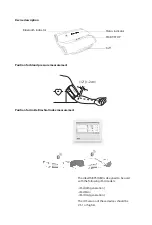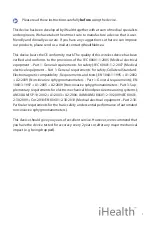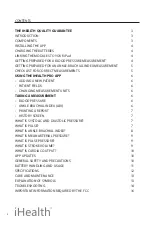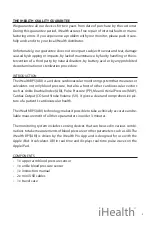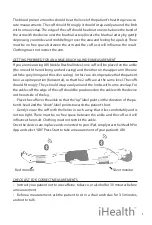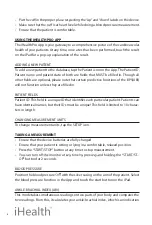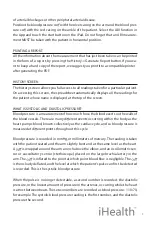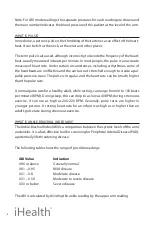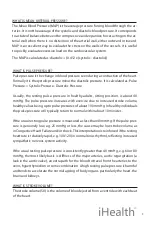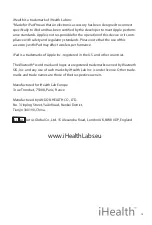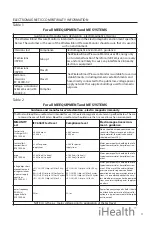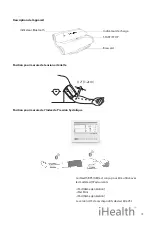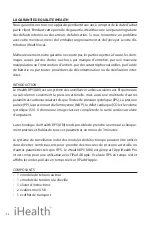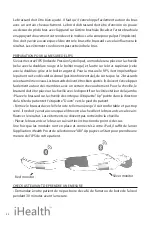
tricle in a minute. It is equal to the heart rate multiplied by the stroke volume.
Therefore, if there are 70 beats per minute, and 70 ml blood is ejected with each beat
of the heart, the cardiac output is 4900 ml/minute. This value is typical for an average
adult at rest, although cardiac output may reach up to 30 liters/minute during extreme
exercise.
APP UPDATES
Regular updates of the iHealth Pro App are available. Depending on the configuration
of your iPad, this can be done automatically.
GENERAL SAFETY AND PRECAUTIONS
Read all of the information in the Owner’s Manual and other provided instructions
before operating the unit.
It is not advisable for people with serious arrhythmia to use this device.
Do not apply the cuff on the arm on the side of a mastectomy.
Do not use this product in a moving vehicle as this may result in inaccurate
measurements.
Blood pressure measurements determined by this device are equivalent to those
obtained by professional healthcare practitioners using the cuff/stethoscope auscul-
tation method within the limits prescribed by the American National Standard, Elec-
tronic or Automated Sphygmomanometer.
If an irregular heartbeat (IHB) is detected during the measurement procedure,
the IHB symbol will be displayed. Under these conditions, the device will function,
but the results may be inaccurate.
There are 2 conditions under which the signal of IHB will be displayed:
10
!
!
!
!
!
Its value is obtained by subtracting end-systolic volume (ESV) from the end-diastolic
volume (EDV) for a given ventricle: SV = EDV - ESV
In a healthy 70kg man, the left ventricular EDV is 120 ml and the corresponding ESV
is 50 ml, giving a stroke volume of 70 ml.
Stroke volume can also be approximated as: SV = Pulse Pressure x 1.7
WHAT IS CARDIAC OUTPUT?
Cardiac output is the volume of blood being pumped by the heart, in particular a ven-
Summary of Contents for BP5
Page 37: ...35...


